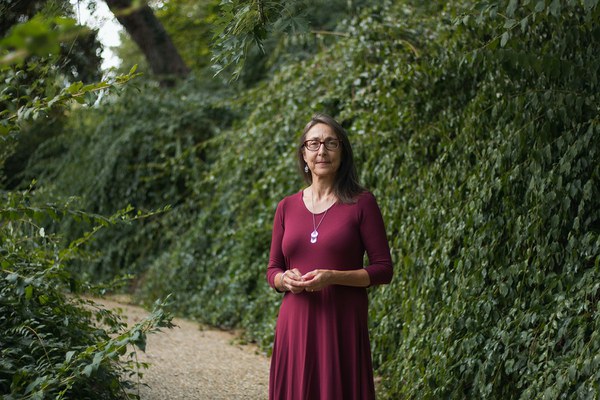Ann Komara, a professor of landscape architecture and urban design at the University of Colorado Denver, is a fellow in Garden and Landscape Studies. Her recent research report, “Les Promenades de Paris: Reception of Alphand’s Urban Landscape and Treatise,” contextualized highly influential landscapes and urban designs in Second Empire Paris by reading the history, site conditions, construction practices, and popular perceptions of the new parc des Buttes-Chaumont.
Q&A with Ann Komara
What is the parc des Buttes-Chaumont?
Napoleon III seized power in 1852 and took on a beneficent government approach, trying to make good on a lot of public improvements. During the Second Empire in France, one of his goals was to create a healthier, cleaner, more beautiful Paris. He and his official Baron Haussmann annexed what had been little villages and suburbs outside the walls of Paris with the intention of increasing the economic base of the city and bringing in more people. The plan to redraw the borders and transform the city also included building new parks and public gardens for citizens.
The far-flung northeastern corner of the working-class nineteenth arrondissement lacked such amenities. The park site’s nefarious past and industrial operations were very present: it had been the site of a notorious gallows, then a landfill and sewage dump, and the cliffside—the northern edge of the butte—had recently been closed as an active quarry.
The park designer, Jean-Charles Adolphe Alphand, saw potential in transforming this quarry into something special—to recreate out of such an unpleasant past something beautiful and picturesque and approachable, a signature of his talents as an engineer and a landscape architect. The parc des Buttes-Chaumont was pretty phenomenal by the time he completed what he’d set out to do.
What made the park so phenomenal?
The experience of wandering the paths, discovering all the nooks and crannies; the spectacular views; and the elements he added. Part of what Alphand did was transform private garden ideas into publicly accessible garden and park spaces. The parc des Buttes-Chaumont was like a nineteenth-century Disney in its fabricated landscape—a suspension bridge that swayed when you walked over it, the introduction of exotic plant materials, a fabricated cascade and “cavern” with fake stalactites. Visitors knew it was fabricated and could marvel at the transformations. But you didn’t have to pay like you do for Disney now!
Where does your research into the park go next?
In 1867, Alphand produced a catalogue raisonné of the works he was accomplishing, called Les promenades de Paris; Dumbarton Oaks owns the two-volume large folio set in the Rare Book Collection. The frontispiece is amazing; I studied it for a few days trying to figure out what it shows. I have been going weekly to study Les promenades, as well as histories of French design theory, and other books that Alphand’s publisher Rothschild made for public distribution on new plants, local ferns of France, wildflowers, insects. I also examine the Dumbarton Oaks collection of the whole set of Magasin pittoresque—all outstanding resources.
Les promenades is the basis for the ten-chapter book I’m now writing. When I arrived at Dumbarton Oaks, I was interested in the idea of the construction and reception of the parc des Buttes-Chaumont. Now I’m using that particular park as the vehicle for explaining lots about design and what was going on in Paris contextually, structurally, administratively, technologically, culturally. It’s a deep history.
Being trained as a landscape architect and a historian gives me what I would argue is extra insight for understanding Alphand’s design process. For example, when I read the list of over 2,000 plants they catalogued for use in the public parks of the city, I know that’s astonishing because I have made plant choices and been trained to create a planting plan. The list of includes various different kinds of something—say, geraniums or oaks. It’s daunting. How did they manage all of this? I was fascinated by them using enormous banana plants—Musa ensete, an exotic plant—in the public gardens and parks. I got tricked by the scale of the picture in Les Promenades, until I found another image in William Robinson’s book Gleanings from French Gardens showing people standing by those big leaves.
My combined training leads me to ask both practical and theoretical questions: who was Alphand designing for, and how might they use the space? Where was he sourcing materials for construction and the plants? What maintenance practices were being developed? How did the design play into administrative efforts and goals? What does it mean to create spaces that erase memories of the city by introducing something new?
Julia Ostmann is postgraduate writing and reporting fellow at Dumbarton Oaks. Photo by Elizabeth Muñoz Huber, postgraduate digital media fellow.

